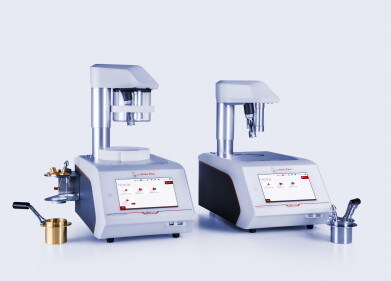Flash point
What is the Difference between Flash Point and Ignition Temperature?
Jun 27 2014
There are various methods and terms used for measuring the flammability and combustibility of a substance. Two of these terms are flash point and ignition temperature. Although they share similarities, they are very different terms.
Flash Point
The flash point is the lowest temperature at which a substance vaporises into a gas, which can be ignited with the introduction of an external source of fire. There are two main methods of measuring a flash point – namely, open cup and closed up.
Open cup flash point testing occurs when the substance is placed into a vessel which is open to the outside atmosphere. Its temperature is then gradually raised, and an ignition source is passed over the top of it at intervals. Once the substance “flashes” or becomes ignited, it has reached its flash point.
Closed cup flash point testing is conducted inside a sealed vessel and the ignition source is introduced into the vessel. As a result, the substance is not exposed to the elements outside of the vessel, which can have an interfering effect on the results of the test. This, in turn, also leads to lower flash points, because the heat is trapped inside. Because it is lower, the flash point is also safer for widespread use, and as such is more generally accepted.
To learn more about recent developments and advances in closed cup testing and their standards, read ASTM D7094 - Modified Continuously Closed Cup Flash Point Standard Accepted as a Safe Alternative Method in Various Fuel Specs.
Ignition Temperature
Unlike with flash points, the ignition temperature does not need an ignition source. In other words, the ignition temperature is the lowest temperature at which a volatile material will be vaporised into a gas which ignites without the help of any external flame or ignition source. As a result, the ignition temperature is of course higher than the flash point.
Typically, ignition temperatures are measured by placing the substance in a half-litre vessel and inside a temperature-controlled oven. The current standard procedures for such tests are outlined in ASTM E659.
It should be stressed, however, that both of these terms are not fundamental, unvarying properties belonging to the substances. Rather they are empirical results, gleaned through laboratory testing, which can vary according to the equipment used, the method chosen and the environment in which it is conducted.
Digital Edition
PIN 26.1 Feb/Mar 2025
March 2025
Analytical Instrumentation - Elemental Analysis for Quality and Process Control at Refineries, for Lubricants and Wear Metals in Engine Oils - Synthetic Lubricants: New Developments - Scaling...
View all digital editions
Events
Apr 08 2025 Birmingham, UK
Apr 08 2025 Kielce, Poland
Apr 08 2025 Ravenna, Italy
Apr 08 2025 Southampton, UK
Apr 08 2025 London, UK



















